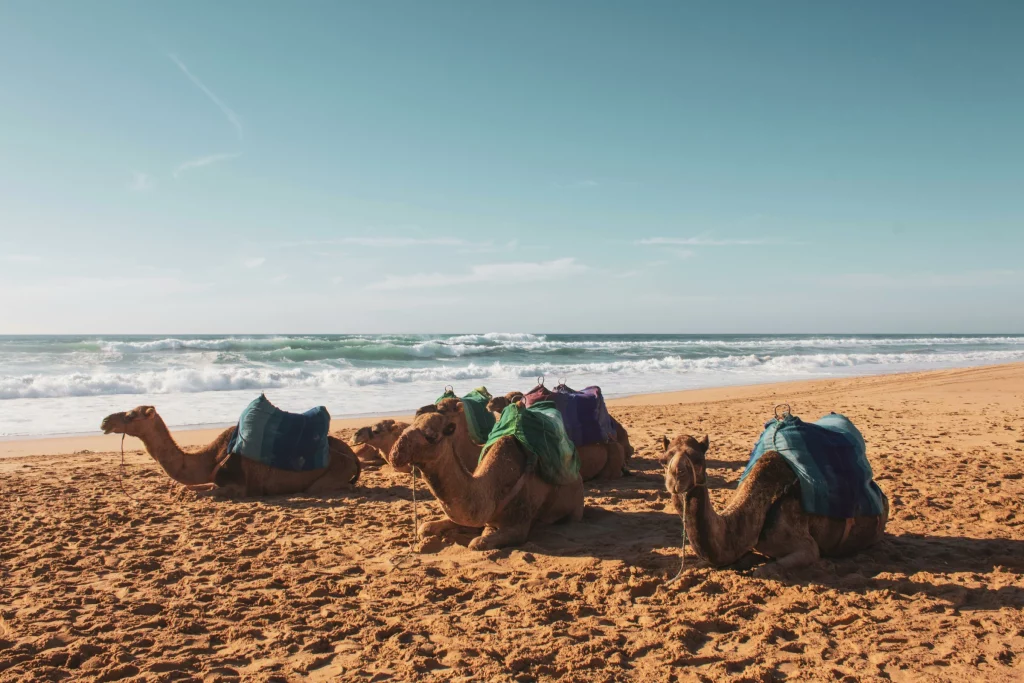
TANGIER
Tangier, a captivating city on the northern coast of Morocco, holds a unique position as a literal crossroads where the Atlantic Ocean meets the Mediterranean Sea and where Africa almost touches Europe across the Strait of Gibraltar. This strategic location has shaped its long and fascinating history, making it a vibrant and diverse city with a distinctive charm.
Tangier’s history is incredibly rich, marked by centuries of influence from various civilizations. It was a Phoenician trading post in the 1st millennium BCE, later becoming Carthaginian, then Roman (known as Tingis, capital of the province of Mauretania Tingitana). It saw successive rule by Vandals, Byzantines, Arabs (who introduced Islam), Portuguese, Spanish, and even a brief period of English control in the 17th century. Perhaps its most famous historical period was the early to mid-20th century (1923-1956) when it was an International Zone, jointly administered by several European powers. This era attracted diplomats, spies, artists, writers (including the Beat Generation figures like Paul Bowles, William S. Burroughs, and Jack Kerouac), and a bohemian crowd, giving it a reputation for intrigue and artistic ferment.
Since its reintegration into independent Morocco in 1956, Tangier has continued to evolve, investing in modern infrastructure while preserving its historical core. It’s now a major port and trade center, a royal summer residence, and a growing tourist destination.
Tangier’s unique history has forged a deeply multicultural identity. You’ll find a fascinating blend of Arab, Berber, European (especially Spanish), and even Jewish influences in its architecture, cuisine, languages, and daily life. This cosmopolitan spirit is what gives Tangier its distinctive energy.
The Medina (Old City) is a labyrinthine network of narrow, winding alleyways, the medina is the beating heart of Tangier. The Souks (markets) sell everything from spices, leather goods, and textiles to local crafts and everyday necessities. The Petit Socco is a famous small square, once a hub for writers and artists, now a lively spot for people-watching from its surrounding cafes.
The Grand Socco (Place du 9 Avril 1947) is a larger, bustling square marking the boundary between the medina and the new city. It’s a central gathering place with cafes and the historic Cinema Rif. The Kasbah is perched on the highest point of the medina, this historic citadel offers panoramic views of the city, the port, and the Strait of Gibraltar.
Dar el-Makhzen (Sultan’s Palace) is a beautifully preserved 17th-century palace that now houses a museum. The Tangier American Legation Museum is the only U.S. National Historic Landmark located outside the United States. It was the first American diplomatic property abroad, gifted to the US by Sultan Moulay Slimane in 1821, recognizing US independence.
Cap Spartel is located about 14 km west of the city, this cape marks the point where the Atlantic Ocean and the Mediterranean Sea officially meet. The nearby Caves of Hercules (Grotte d’Hercule) sea caves are famous for a dramatic opening to the sea that is said to resemble the map of Morocco. Legend has it that Hercules rested here during his labors.
The Ville Nouvelle (New City) is a more modern European-style district with wide boulevards, cafes and modern shops. The Terrasse des Paresseux (Terrace of the Idle) offers spectacular views over the harbor and the faint outlines of Gibraltar and Spain across the Strait.
Tangier is often considered a “gateway to Africa, locations offer a fascinating blend of cultures, a rich diverse history and a vibrant atmosphere that continues to captivate.
